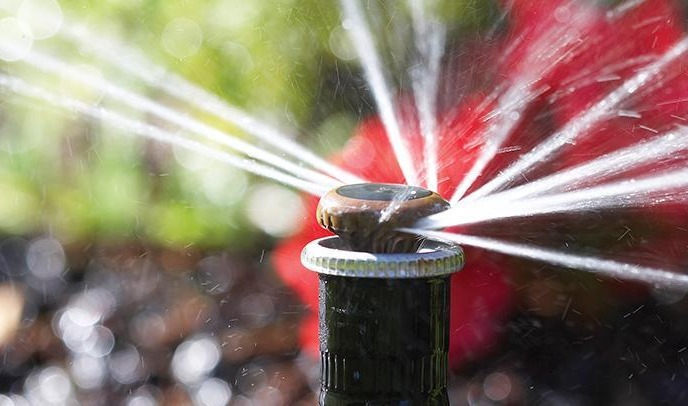5 Signs Your Yard Needs a Drainage Solution
Have you noticed standing water in your yard after a storm? Or maybe your lawn has patches that...
By: Panamericas on Apr 10, 2025 1:47:43 PM

If you live in Houston, chances are you’ve asked yourself this question at least once as spring rolls around: “Is it time to turn on the sprinkler system yet?” It’s a smart question, and the answer isn’t just about the calendar—it’s about the climate, your lawn’s needs, and the condition of your irrigation system.
Houston’s weather is famously unpredictable, especially during the transition from winter to spring. One week it’s 40 degrees, and the next it’s 85 and humid. That’s why it’s important to understand not just when to turn your sprinkler system on—but how to do it properly, and what to watch out for.
Let’s break it down.
The general rule of thumb for the Houston area is to wait until late March to early April to reactivate your sprinkler system. This gives the soil time to warm up and avoids the risk of a sudden late-season cold snap that could damage your pipes or components.
Here’s why timing matters:
Too late: Waiting until May or June means your lawn may begin to suffer from drought stress. Houston heat ramps up quickly in the spring, and lawns need consistent moisture to thrive.
We recommend aiming for after the last average frost date, which for Houston is typically around March 10. Check the 10-day forecast to make sure overnight lows are comfortably above freezing, then go ahead and start the system up.
Even if the calendar says “go,” your lawn might not need full irrigation just yet. Keep an eye out for these natural indicators that your grass is getting thirsty:
Soil feels dry 2–3 inches below the surface
Once you spot these signs and Houston’s spring warmth is settling in, it’s safe to say your yard is ready for regular watering.
A lot can happen during the months your sprinkler system sits idle. Tree roots shift, soil settles, and cold snaps—even brief ones—can damage pipes and heads. That’s why it’s critical to do a pre-season inspection before turning everything back on full blast.
Here’s what to check:
Make sure the timer is correct (including the year—some systems reset after power outages). Check watering days and durations to ensure you’re not overwatering.
Inspect your backflow preventer for any signs of damage or leaks. This device is essential for protecting your household water supply.
Turn on each zone manually and look for leaks, weak spray patterns, or zones that won’t activate. These issues could indicate valve problems or underground line damage.
Clear away any dirt or grass that’s grown over heads. Replace any cracked or broken ones, and realign spray patterns so you’re watering the lawn—not the driveway or sidewalk.
In Houston, spring watering needs will vary depending on rainfall. A good starting point is once or twice a week, for about 15–20 minutes per zone, depending on your system and soil type.
Use the “cycle and soak” method to prevent runoff:
Run again for 5–7 minutes
This helps water penetrate deeper into the soil, encouraging stronger root growth and reducing waste.
Don’t set it and forget it! Houston weather can swing from dry spells to torrential downpours in a matter of days. Install a rain sensor or smart controller to automatically pause watering during or after rain events.
If you already have a smart irrigation system, now’s a good time to update the app, calibrate your zones, and fine-tune seasonal adjustments.
Have you noticed standing water in your yard after a storm? Or maybe your lawn has patches that...
If you’ve ever heard the term "backflow" and wondered what it means, you’re not alone.